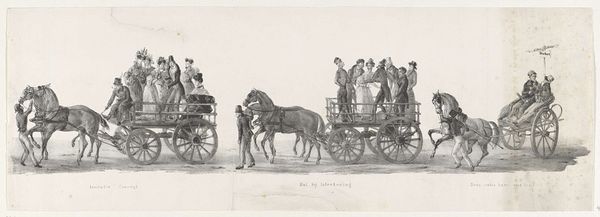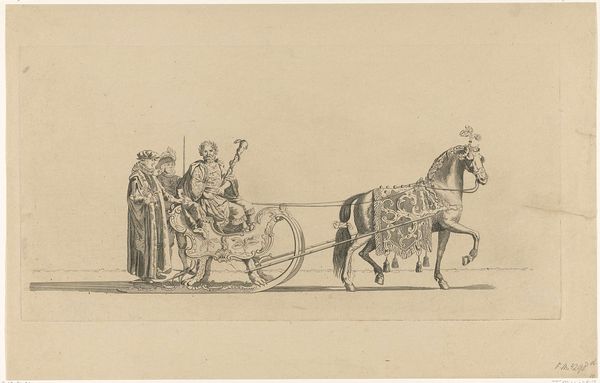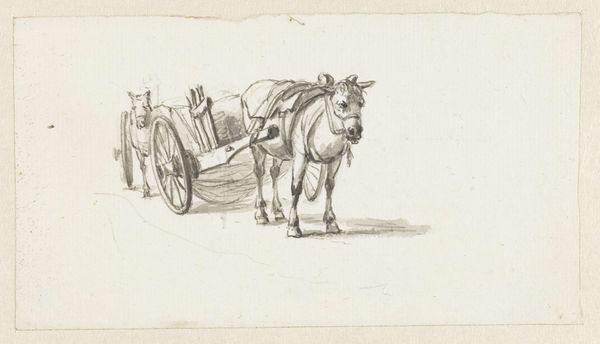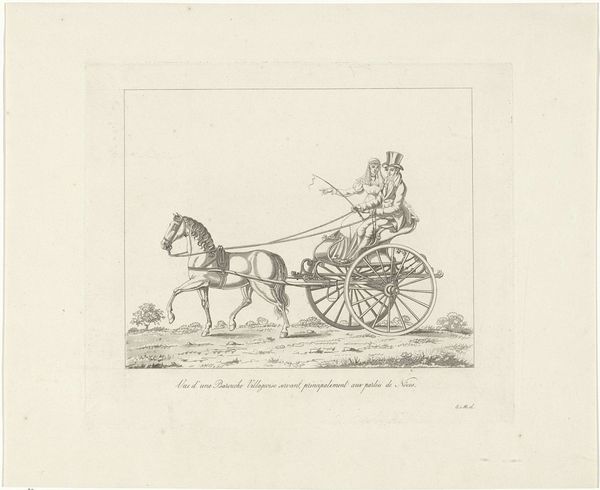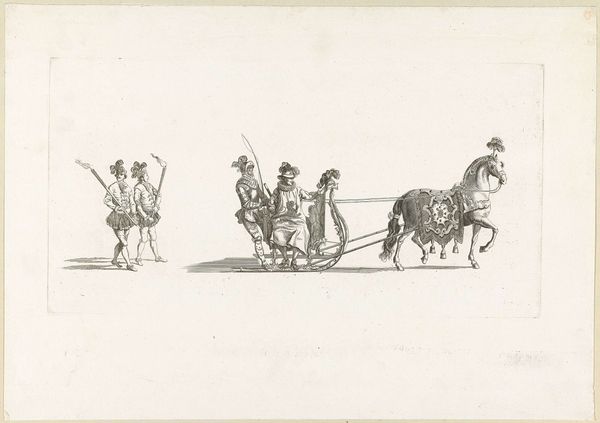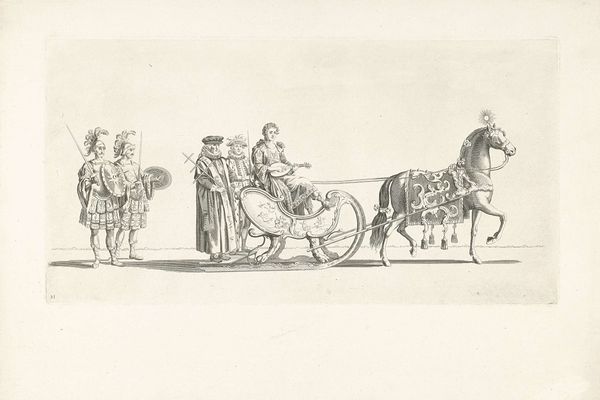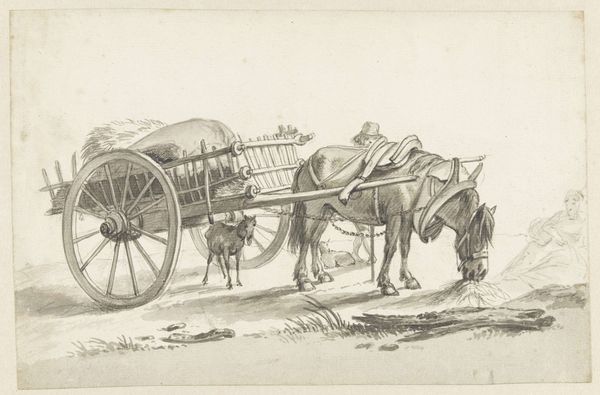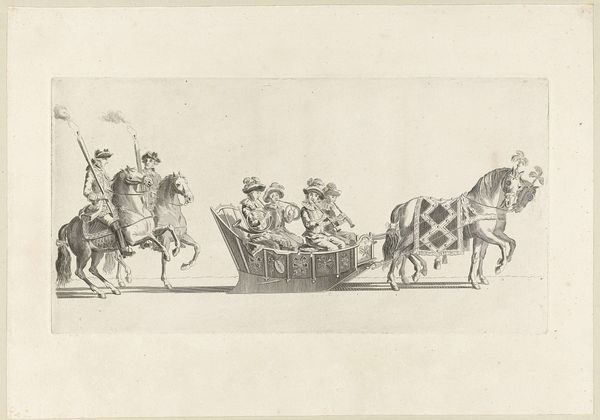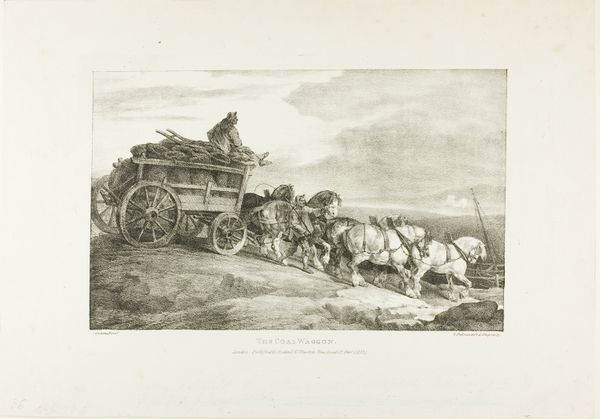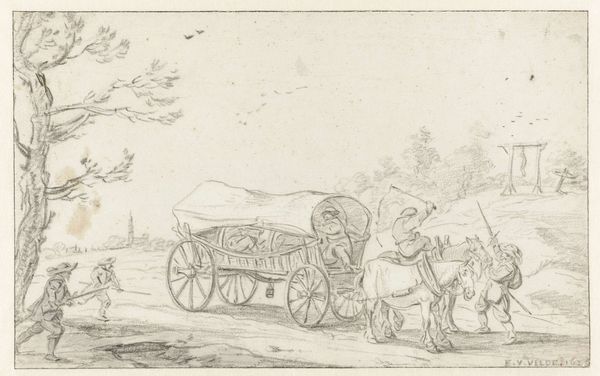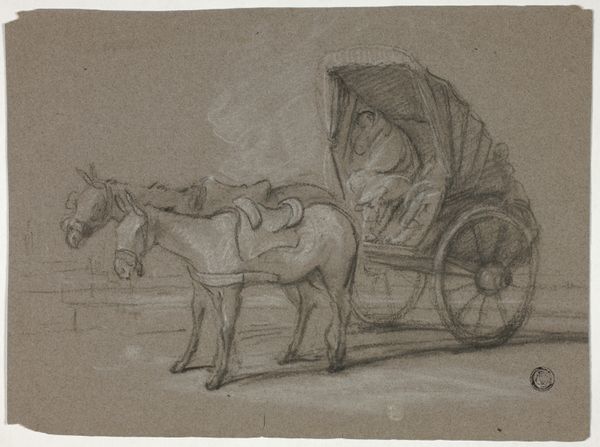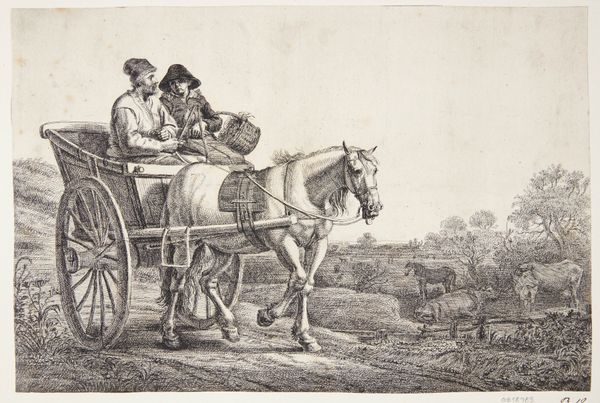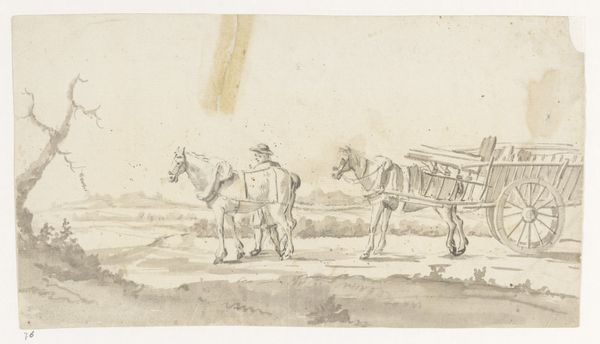
drawing, print, etching
#
drawing
#
narrative-art
# print
#
etching
#
caricature
#
romanticism
#
genre-painting
#
academic-art
Dimensions: height 197 mm, width 570 mm
Copyright: Rijks Museum: Open Domain
Curator: Let's discuss this interesting etching by Leendert Springer: *Vijf Faculteiten en een Publieke Promotie, 1835*. That translates to *Five Faculties and a Public Promotion*. It looks to me like a satirical parade. Editor: Satirical indeed! My first impression is one of chaos barely contained. The stark black and white amplifies the feeling of social upheaval or a world turned upside down. There is so much performativity captured in this drawing. Curator: Absolutely. Consider the context: 1835. Academic life in the Netherlands, entrenched in tradition, rife with hierarchical power dynamics. Springer seems to be poking fun at these structures, using caricature to amplify the absurdities of scholarly processions. What do you think is going on in that first carriage? Editor: The figures in the first carriage definitely appear as though figures in the cart are in opposition of a privileged "Roman figure". It makes me wonder who the drawing is intended to empower, if not people outside of this particular cart. What kind of power does Springer yield in representing those with social power as ridiculous and overtly traditional? Curator: Precisely! It invites us to consider the politics of knowledge, doesn't it? How are the faculties – Theology, Law, Medicine, Philosophy, Sciences—portrayed in relation to societal norms? How does this reflect the tension between intellectual pursuits and the broader public sphere at the time? Editor: Yes, there’s also an interesting tension in the drawing itself. It presents itself as a serious documentation of an event but it can’t seem to fully embrace that role. It mocks the institutional representation and questions its function. What type of person do you think might find it amusing? Curator: I’m picturing university students. Its creation might have coincided with the moment people demanded more accessible academic practices and that art, perhaps in the form of comical art such as Springer's, could encourage these important dialogues and question who benefits from "higher learning". It makes me consider if Springer himself took on this role or if this might have been created on commission to achieve such goals. Editor: Right. In closing, this drawing provides an accessible and humorous image that prompts conversations about knowledge dissemination and the structures that beget it. It's an exciting moment. Curator: Yes. Leendert Springer’s etching gives us much to consider about how we reflect on society's intellectual spheres today.
Comments
No comments
Be the first to comment and join the conversation on the ultimate creative platform.
